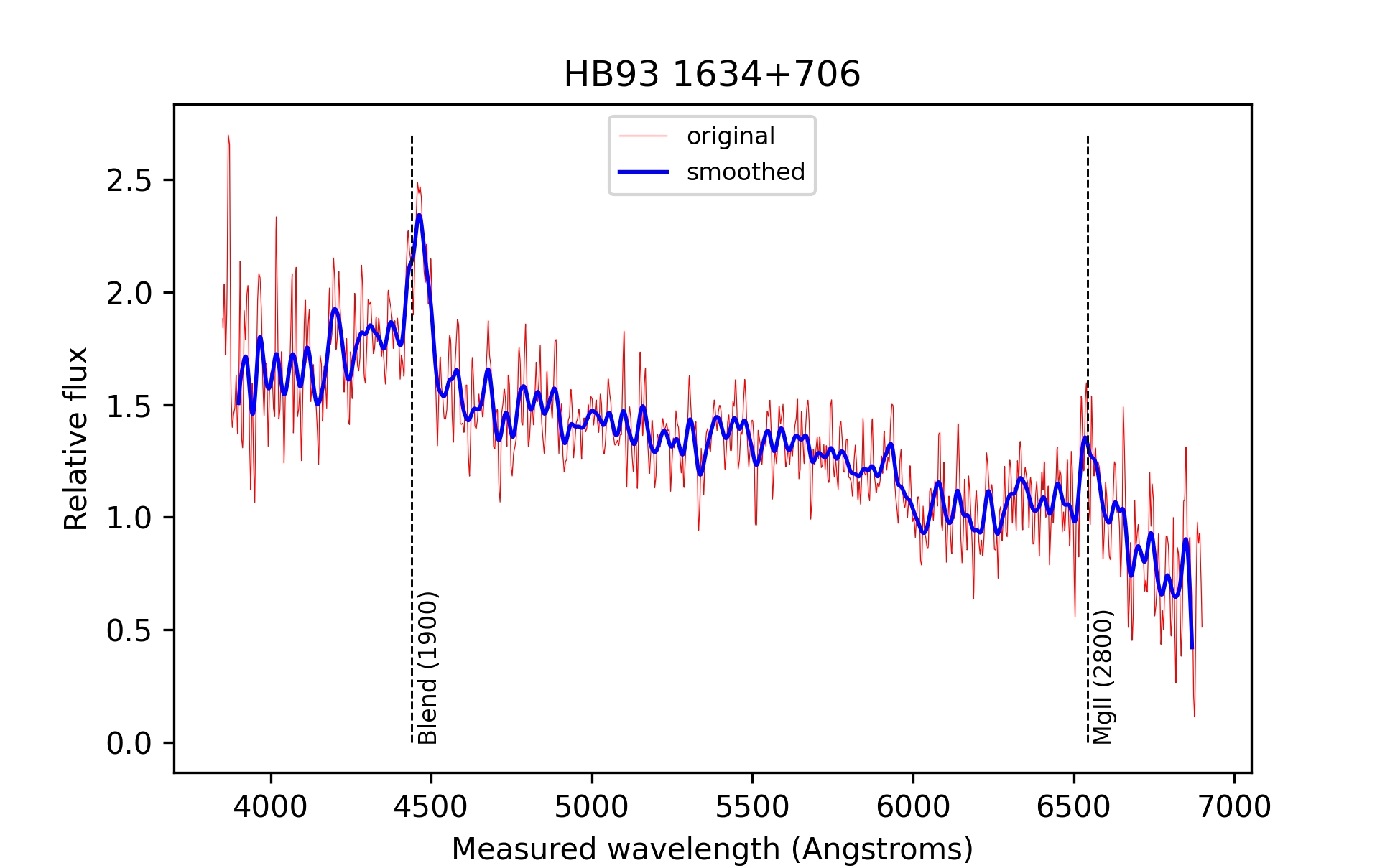Quasi-stellar radio sources (quasars) are some of the most distant and luminous objects we know of. They are another example of Active Galactic Nuclei (AGNs) but the surrounding galaxy is not usually visible; we can only see the stellar-like core – hence ‘quasi-stellar’.
HB93 1634+706 (alternatively, QSO B1634+7037) is a quasar with V-magnitude 14.66. The spectrum shows relative flux against wavelength measured in the usual way with normal calibration procedures. As the signal here was quite noisy, I have overlaid a smoothed version to highlight the main features. Two emission lines visible in quasars are shown which have been placed by redshifting their positions from rest according the published value, z = 1.337; the rest-frame wavelengths are shown against the line label. One line at 1900A is a blend of several components [1]. The other is a Magnesium line at 2800A [2]. There is a good correlation between the putative shifted lines and spectral features. There is a lack of any further features in the spectrum at these shifted wavelengths, which is consistent with published results [3].
The photons from this galaxy impinging on my camera had a light-travel time of 9 billion years – longer than the existence of the Earth.
[1] Buendia-Rios, T. M., C. A. Negrete, P. Marziani, and D. Dultzin. 2023. ‘Statistical Analysis of Al III and C III] Emission Lines as Virial Black Hole Mass Estimators in Quasars’. Astronomy & Astrophysics 669 (January): A135.
[2] Marziani, P., J. W. Sulentic, I. Plauchu-Frayn, and A. del Olmo. 2013. ‘Is MgIIλ2800 a Reliable Virial Broadening Estimator for Quasars?’ Astronomy & Astrophysics 555 (July): A89
[3] Marziani, P., J. W. Sulentic, I. Plauchu-Frayn, and A. del Olmo. 2013. ‘Is MgIIλ2800 a Reliable Virial Broadening Estimator for Quasars?’ Astronomy & Astrophysics 555 (July): A89.


